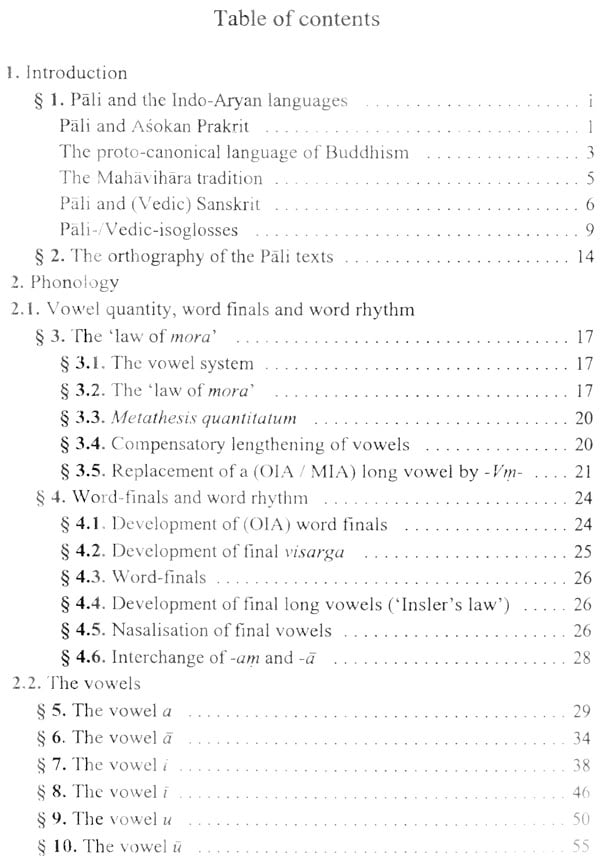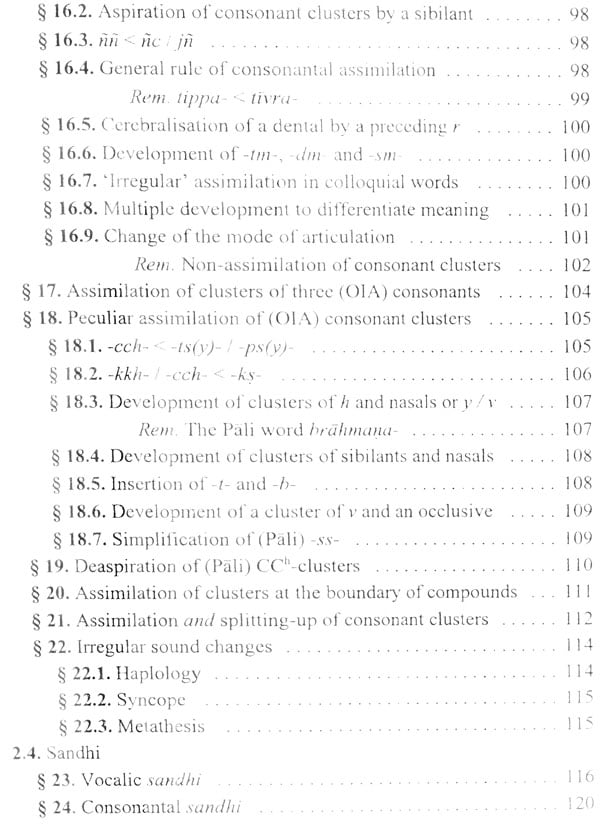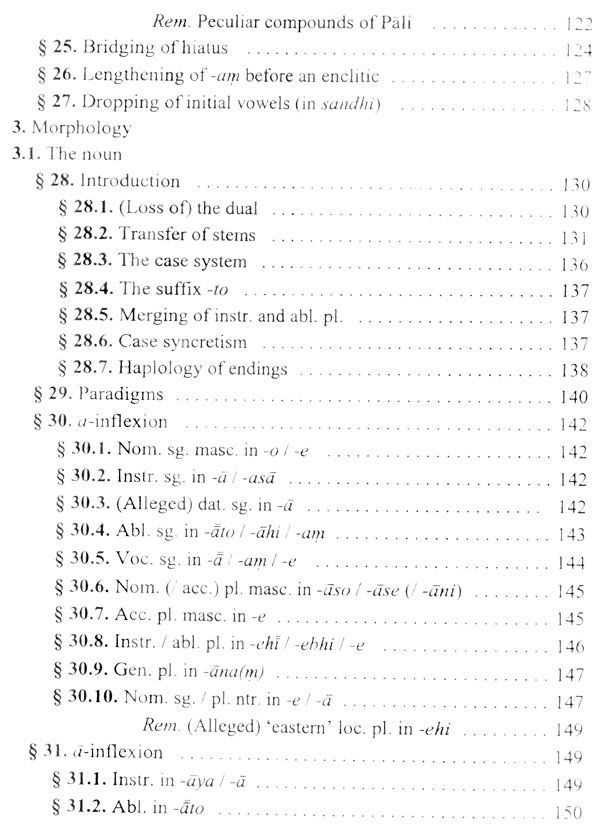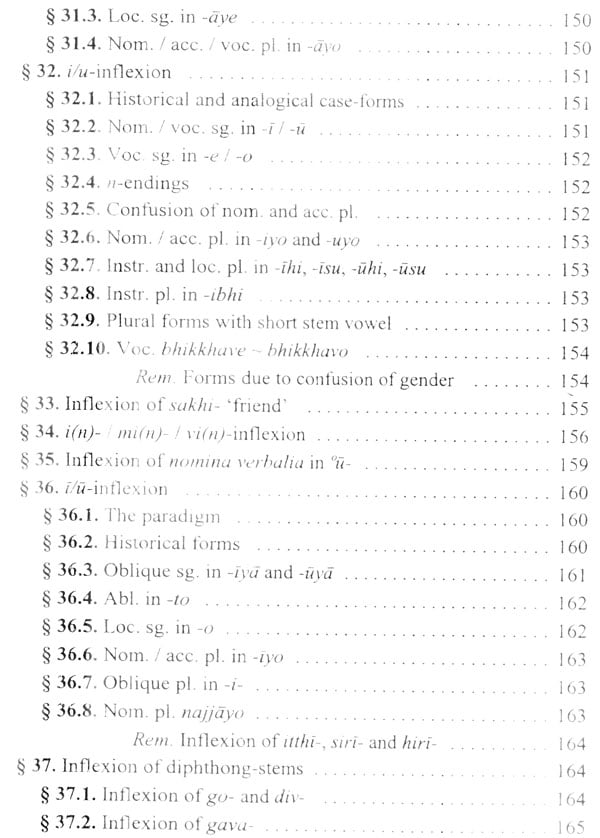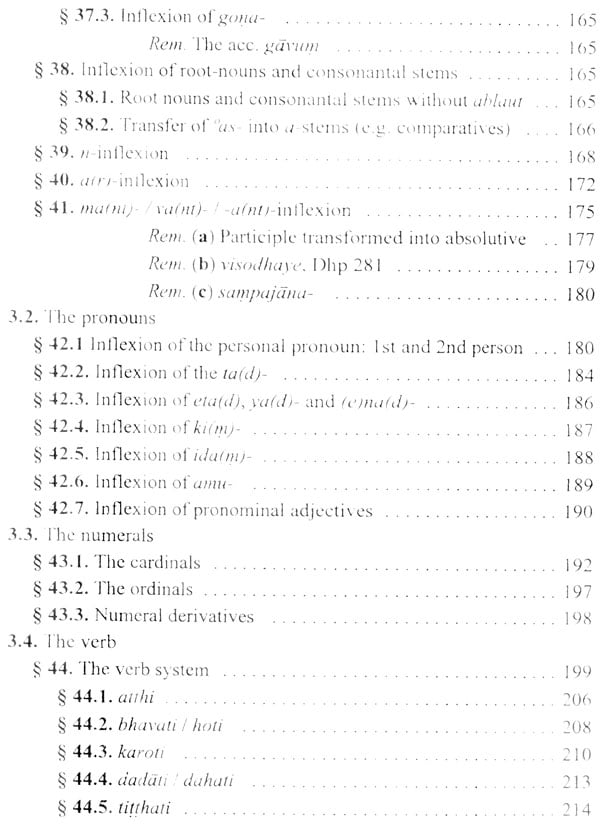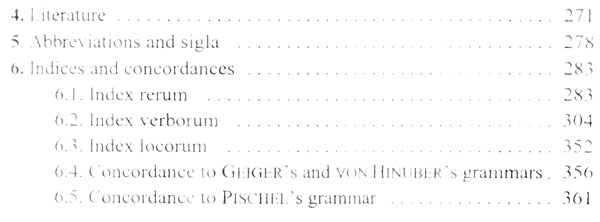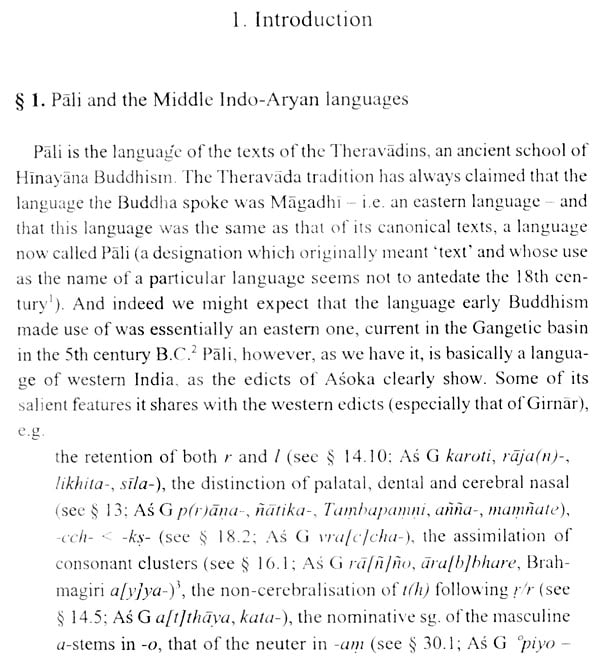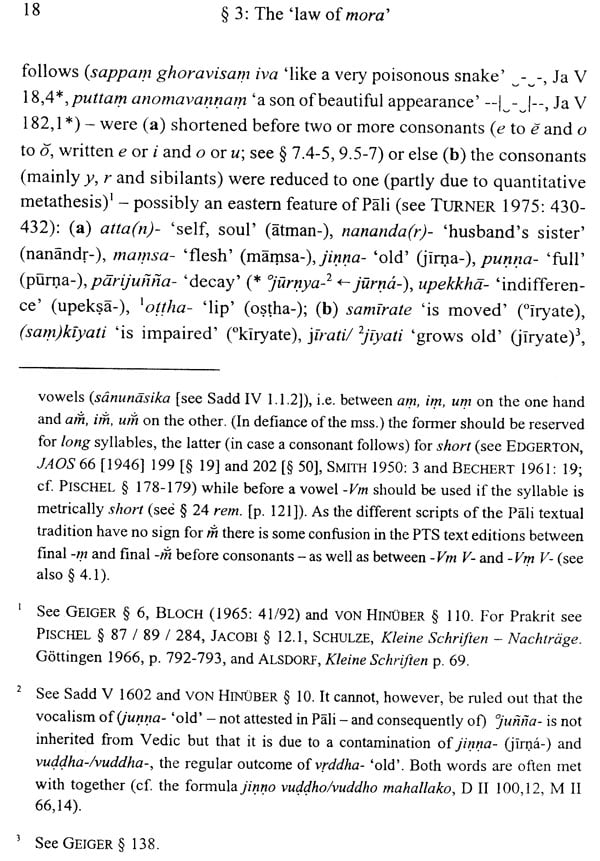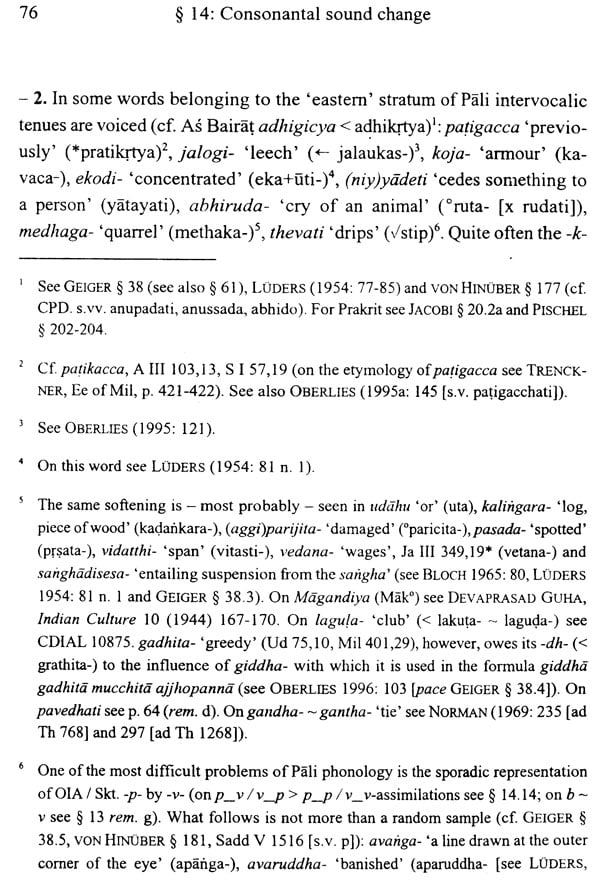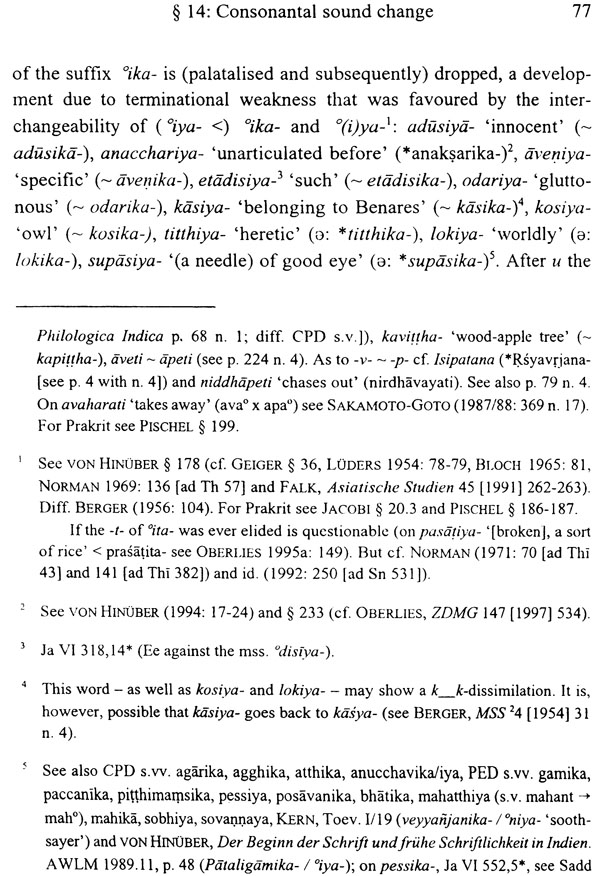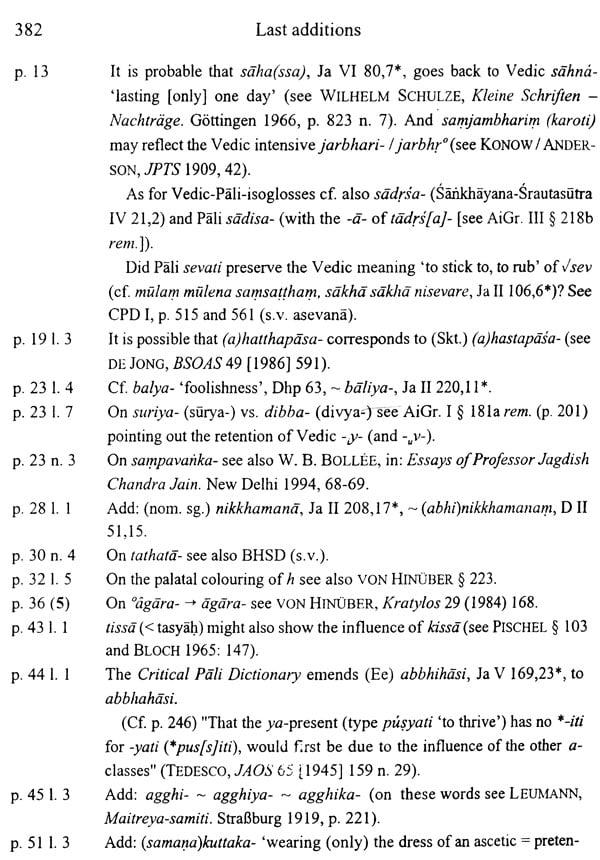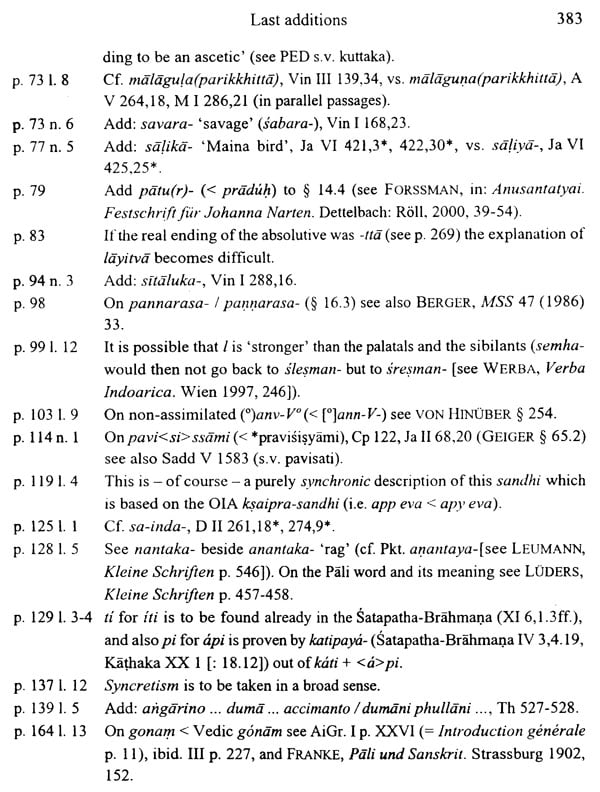
Pali - A Grammar of the Language of the Theravada Tipitaka
Book Specification
| Item Code: | NAY579 |
| Author: | Thomas Oberlies |
| Publisher: | MUNSHIRAM MANOHARLAL PUBLISHERS PVT LTD |
| Language: | English |
| Edition: | 2012 |
| ISBN: | 9788121512343 |
| Pages: | 400 |
| Cover: | HARDCOVER |
| Other Details | 9.50 X 6.50 inch |
| Weight | 680 gm |
Book Description
Comprehensive references to comparable features and phenomena from other Middle Indic languages mean that this grammar can also be used to study the literature of Jainism.
The general significance of Dr. Overlies' Pali grammar, which we are most happy to be able to publish in our series, is therefore a twofold one: Firstly, it is an attempt, and in my view a highly successful one, to bring together, analyze critically and utilize for his new handbook of the Pali language all that has been achieved by scholars working almost exclusively or mainly or even sporadically on problems connected with this language, in the last eighty years, i.e. since the publication in 1916 Wilhelm Geiger's Pali Literature und Sprache as part of the predecessor of the lapses, the old Grandsirs der Indo-Arischen Philologie und Allertumskunde. And this part of our Indo logical knowledge has indeed grown in a most impressive manner thanks to the scholarly endeavors of not a few Indologists like e.g. L. Alsdorf, N. Balbir, H. Bechert, H. Berger, W. B. Bollee, C. Caillat, and Tand. 1. Elizarenkova, O. von Hinuber, St. Insler, K. R. Norman, o. Pind, 1. Sakamoto-Goto, and Th. Overlies himself, and, of course, also Indo-Europeanists like e.g. K. Hoffmann and C. Haebler. But, secondly, this new grammar of Pali will promote no less the study of this language and the vast literature composed in it. It is meant not only for fellow-scholars as a work of reference but also for students as an indispensable tool. Indeed, it is primarily for their benefit that all Pali elements are also translated.
Yet this new grammar is not, of course, just the outcome of an intelligent, diligent and comprehensive gathering of relevant materials. In reality it is the VIII original work of a young scholar, and close friend of mine, who after his doctorate familiarized himself systematically with Pali philology, his first two articles in this field of studies being devoted, significantly enough, to problems of the language and to a Jataka story from the famous collection. The continuation of this twofold interest is further attested in his list of publications if one goes through it from 1989/90 to the last entry (of the year 2000). Yet another feature of Overlies' involvement with Pali studies becomes evident when one reads this list: Studies of individual problems, linguistic, text-critical or literary, lead finally to a comprehensive and fundamental discussion of the overarching problems. Thus his meticulous examination of various Jatakas - which shows how much Overlies was able to learn from Alsdorf - are crowned by his two articles of 1993 and 1997 "Der Text der Jataka-Gathas in Fausbells Ausgabe (Stand und Aufgaben der Jataka-Frosting I)" and id. "II". Similarly, he winds up his studies on problems of the grammar of the Pali language in the article "Stray remarks on Pali phonology, morphology, and vocabulary. Addenda et corrigenda to Geiger's Pali Grammar" of 1996. And yet, reading this article again one realizes that even this was no more than a prelude to the much more comprehensive, original and also ambitious undertaking of writing himself a new grammar of Pali, offering a synthesis of the present state of our knowledge, on the one hand, and of his own opinions, observations and conclusions, on the other.
The result is in my view a big step forward in Pali philology, and Middle Indo-Aryan philology at the same time. I hope that this new handbook will be well received by 'all those who already know this language as also by those who wish to learn it and to thus gain access to the marvelous and highly fascinating world of Theravada Buddhist thought.
This is exactly what happened to GEIGER's Pali grammar ... when it was re- published by the Pali Text Society as 'A Grammar of Pali by WILHELM GEIGER, translated into English by BATAKRISHNA GHOSH, revised and edited by K. R. NORMAN'" (VON HINOBER 1999: 148). This publication should therefore not be regarded as a new Pali grammar, which is still a desideratum. What a pity HEL- MER SMITH declined when asked by WILHELM GEIGER to prepare a second edition of his grammar!
When towards the end of 1997 Professor Dr. GEORGE CARDONA asked me to write the chapter on Asoka Prakrit and Pali for The Indo-Aryan Languages (ed. by GEORGE CARDONA and DHANESH JAIN) I was obliged to bring together and sift through my Pali collective. During 1998 I prepared a draft Pali gram- mar in order to have a solid base for my contribution to CARDONA's and JAIN'S handbook (to be published by Curzon Press). Since then I have continually re- worked my Pali grammar, included references therein to secondary literature covering research done down to the year 2000; and I have prepared extensive indexes. The result now lies before you. But restricted as it is to the language of the canonical Pali texts - despite some exceptions (e.g. Dip, MHz, Mil) - this grammar can be regarded only as a complement to 'Geiger', and like 'Geiger' it lacks a chapter on Pali syntax. To make a long story short: a new 'Geiger' com- prizing all stages of Pali, registering all forms with their references and giving an up-to-date description of the Pali syntax has yet to be written. That this grammar may prove helpful for such an enterprise, I have taken the step of adding meanings to all words and references if such cannot be found with the help of CPD or PED; and I have appended concordances of the present grammar to 'Geiger' and x VON HINOBER’s Uberblick (see p. 356-360) and to RICHARD PISCHEL's Grammatik der Prakrit-Sprachen (sees p. 361-380). As the phonological development of Pali in the main runs strictly parallel to that of the various Prakrits, this Pali grammar might be of some help for the study of Prakrit as well. And as it is unlikely - to the best of my knowledge - that a new 'Pischel' will be published in the near future, I have decided to include a short summary of the paragraphs of 'Pischel' and to add a number of addenda et corrigenda pertaining to particular problems.
Many thanks for advice and criticism go to my friend Dr. Chlodwig H. Werba, whose keen eye and great expertise spared me many an embarrassment, to Professor Dr. Oscar von Hinuber for numerous and pertinent discussions of individual problems and for loans of books and articles, and to Professor Dr. Lambert Schmithausen for valuable suggestions on an earlier version of this grammar. Professors Dr. Nalini Balbir and Dr. lunko Sakamoto-Goto, though not directly involved in this project, were over the years always helpful ,when I consulted them on problems of Middle Indo-Aryan grammar and metrics. My thanks are also due to Professor Dr. Colette Caillat for 'kind exhortations' given when I first took up Pali - and of course for her exemplification of scholarly excellence. Peter Delion, a former student of mine, kindly searched the libraries of Tubingen for many an article not available in Freiburg, and Professors Dr. Saroja Bhate, Dr. S. D. Laddu (both Poona) and the late Dr. H. C. Bhayani (Ah- med bad) were kind enough to forward copies of articles not (readily) available in Europe. My sincerest thanks go to Dr. Anne MacDonald for having vetted my English - this despite much pressure of work - and to 10m Peter Michaels, a student of mine here in Freiburg, for having checked most of the text references. Naturally I alone am responsible for any remaining errors. I trust only they will not prove numerous. Not least I wish to thank Professors Dr. Albrecht Wexler and Dr. Michael Wetzel for accepting this Pali grammar for their series Indian Philo- logy and South Asian Studies - and the former for kindly writing the preface - and the Deutsche Forschungsgemeinschaft for awarding a Heisenberg Stipendium (1994 - 2000) which enabled me to persue my researches.
Book's Contents and Sample Pages
